According to You: The worst engines you’ve experienced
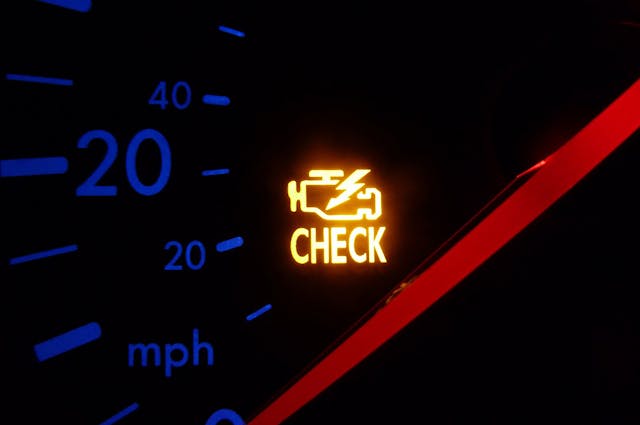
We recently asked about the worst engines you’ve experienced in your lifetime, and you certainly delivered. Perhaps too well, as the responses were overwhelming. How on earth could we cover all the bad engines made over the years? Our solution to this (wonderful) problem was thus: we thinned the herd down to responses that specifically included personal experiences that add a little more value than just the usual re-hashing of the same stories you’ve heard elsewhere.
Let’s get right to it!
The Iron Duke four-cylinder
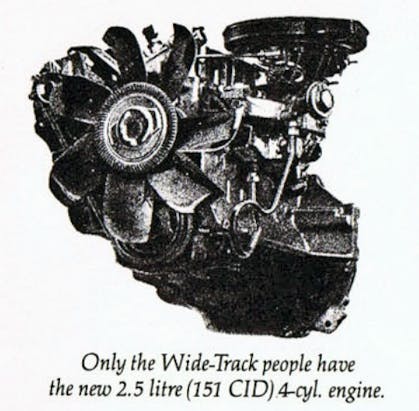
Charles A Parent said that the worst engine he ever owned was a Pontiac Iron Duke that “constantly ate Throttle Position Sensors and cracked the cast iron exhaust manifold three times.”
While the inclusion of TPS sensors suggests it might be the later TECH IV design, combining that with a four-speed shifter “that was prone to locking, in or out of gear” caused him to Lemon Law the car.
VW Type 412 1.8-liter flat-four
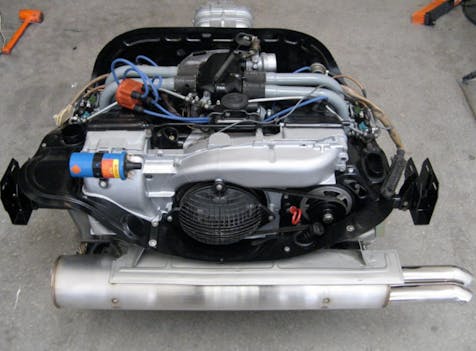
Hagerty Community user lasersailor came in strong with this one:
“I’ve got you all beat. 1679cc flat 4 in my parents 1972 VW411 wagon with a wimpy 3-speed auto transmission. Two fires caused by improper fuel injection repair at the so-called dealer in Florida. The 2nd fire caused near total immolation. Plus it was slower than a Pinto or Vega.”
Toyota 3VZ-E V-6

Hagerty Community member John Nichols gave a very balanced perspective on one of the more desirable and durable engines from Toyota, because sometimes tearing into something can turn into quite a shock:
“I recently got involved with a 1992 Toyota V-6 rebuild. The truck had a blown head gasket, the oil was full of water. Obviously these vehicles have a huge cult following of being amazingly reliable which I’m sure is well deserved.
HOWEVER when things do start to go it will cost you and assembly must be performed like a surgical operation. Parts and pieces and shrouds, crossover exhaust converters not to mention miles of vacuum lines weird little filters and of course the timing belt alignment are all part of the problem, not to mention the famous under the manifold sensor wire.
Ordinarily working on engines can be kind of fun be it a small block or an English roadster, although you have to make little tweaks often and pay attention to detail the reward of a few hours attention is measurable performance improvement.”
Chrysler 2.2-liter four-cylinder

This one might spark some controversy, as Chrysler’s 2.2-liter engine was designed specifically for a new platform and a new automotive reality. That said, Hagerty Community member David likely had an older model, but his experiences are certainly worth a read:
“As I recall memories of the early 80’s K Car with that darn 2.2 liter I feel a tension headache coming on. That engine had more use as a boat anchor, and I remember my poor dad spent more time and dollars repairing shoddy engineering design.
Crazy but true, when I got my licence and started to drive – I took that K Car to town and the engine actually fell out of the car! The front motor mount failed in the middle of an intersection. I guess even the car itself was sick of that engine and tried to spit it out.”
I reckon that A. Raymond had it even worse, but at least the dealership asked him a rather hilarious question:
“I had a Chrysler 2.2 non turbo forced upon me as a young fellow. Driving home from work in rush hour traffic, the engine decided it was time to digest itself. (It had 25,000 miles on it at the time.) The dealership accused me of ‘racing’. I laughed long and hard at the suggestion and told them I wouldn’t be doing too much racing with 88 hp.
After begrudgingly replacing the motor under warranty, I drove it another 3 months before selling it to another unfortunate schmuck. It was the worst thing I have ever had the displeasure of having to drive. I look back now and still laugh at that ‘you must have been racing’ suggestion.”
Oldsmobile Quad 4 four-cylinder

Brian was pretty sick of the Iron Duke in his 1985 Cutlass Calais, noting it was reliable but also “noisy and weak.” So imagine his delight when the Quad 4 made a splash in 1987:
“I was so excited to get one of the first Quad 4s. More power and much quieter. My love affair ended at 67,000 miles when it had a complete meltdown out of warranty. My very last GM car.”
And then we heard from Tom:
“Yes, I had the Quad 4 in a Pontiac Grand Am. Delightful, until the head gasket failed. Dealership near my work (different state from purchase point) tried really hard not to cover the failure but, after showing how much coolant I was adding, did a cheap fix. Probably tore it down to only replace the head gasket because it failed again, just out of warranty.
At that point, I was back where I bought the car, and they repaired it again, but it still didn’t seal. Any time I got in traffic, it would overheat and blow out the coolant. Tried checking the cooling system (radiator, etc.) without finding any issues. Aluminum head must have been significantly warped by that point. Finally sold that car. Too bad as it was fine as long as it was moving.”
Honda CVCC four-cylinder

Dan T Man takes us over to Honda, a brand we don’t usually hear about in this context. But he noted that the “1751 CC engine in the original Honda Accord was known to develop a head gasket leak between the #3 and #4 cylinders every 30,000 miles.” He said that it ran fine otherwise, and learned that “when the engine lost about 50 rpm at idle it was time for another change” of the head gasket.
AJD went further:
“My first brand-new car was a 1977 Honda Civic CVCC. Within 60K miles it had eaten 3 water pumps and blown its head gasket. The head gasket had been recalled but would not be replaced until blown. It really blew up nicely and the engine never ran right again.”
Buick 3.8-liter (Malaise Era) V-6

Don’t take this as a slam on Buick’s tried-and-true, 90-degree, 3.8-liter V-6. Odds are the problems that Dwayne Wertman experienced came from the Malaise Era engineering mounted to its induction and exhaust systems.
“I bought a new 1981 Oldsmobile Cutlass V-6. The engine would ping and rattle just trying to keep up with traffic. Often times it would stall in the intersection. I returned to the dealership on many occasions. It was a really good dealership, [because] after eight months they bought back and all I lost was tax and license.”
eagerdever drives home the point of this being an issue from the 1970s and early 1980s:
“I experienced oiling problems accompanied by valve train noise and the engine light in a 3.8 V-6 in a ’79 Olds Cutlass wagon. I’d stop and let the engine cool down, and then be on my way. The crankshaft finally broke in half. Because it broke on the diagonal, the engine continued to run, though poorly. A co-worker had similar problems with that engine in a Grand Prix, replaced under warranty. Another co-worker lost the engine in his Buick Skyhawk (the Buick version of the Chevy Monza). All three were due to poor oiling.”
Mitsubishi 4G54 four-cylinder with Mazda sprinkles
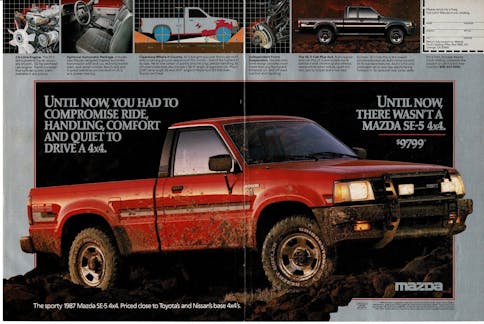
While the Buick was a victim of engineering mandates of the era, apparently Mazda shot themselves in the foot with a half-baked design made with no third-party intervention! Check out Arthur Hill’s fascinating tale of deceit:
“In 1988, as my family grew to 4, I needed to trade my Toyota 4X4 Pickup for one of the new ones with actual back seats to hold the two children. Unfortunately Toyota did not produce one until a few years later, but Mazda had a very nice looking B2600 4X4 that had back seats. This truck had the worst engine I ever had to deal with. I quickly discovered that if you really put your foot into it under a load, the engine would stutter and almost stall. Many trips to the dealer failed to solve this issue.
Finally a mechanic took me aside and admitted that Mazda rushed the truck into production without having an engine big enough, so they used a Mitsubishi 2.6 engine instead, but to make it easier to work on for their service people, they adapted their own accessories including the carburetor. Under load the only way the engine could get enough fuel was to link both barrels together all the time.
Needless to say, Mazda dropped this truck and you never see any on the road. Terrible truck with a terrible engine, but the actual Mitsubishi 2.6 engine was probably fine in their own vehicles.”
Mitsubishi 4G54/Chrysler HEMI 2.6-liter four-cylinder

No, not that Hemi. Or that one. We’re talking about the hemi-headed Mitsubishi 2.6-liter used on the Chrysler K-car and its derivatives. Chris Harshman said that the “worst engine I ever had was a 4-cylinder Mitsubishi engine in my 1982 Dodge 400. I used to joke with my friends that I could accelerate from 0-to-35 in 12 seconds.”
Subaru boxer flat-four/flat-six
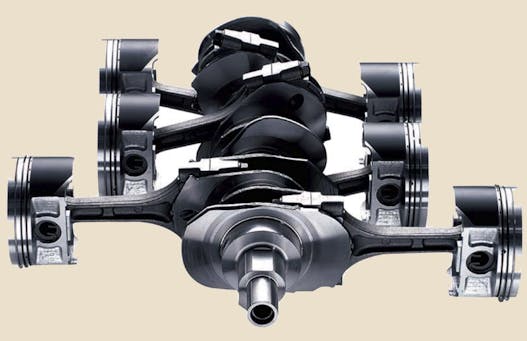
BobJ chimed in with one of the more offensive engines in modern history: the head gasket-munching Subaru boxer. But unlike other stories here, he made the same mistake twice.
“Had a 2005 and a 2010. Both blew head gaskets. Out of warranty but I complained and Subaru of America paid for half. Everyone complains about poor head gasket design & construction but I also wonder about open deck block design.”
GM 2.4-liter Ecotec four-cylinder
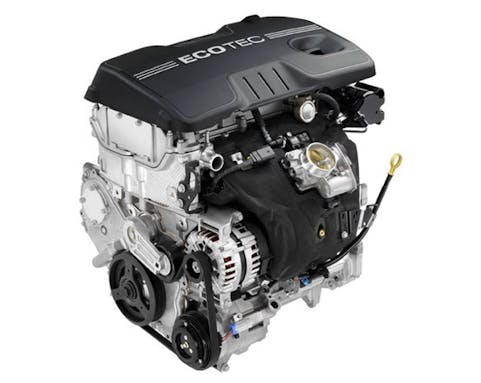
Hagerty Community member Rob keeps us in a more modern era, with a problem with the Ecotec 2.4-liter mill in his 2010 Chevrolet Equinox.
“Here’s a counterpoint for everyone who marvels at the reliability of modern cars. Launched just after GM’s bankruptcy, I should have known they probably cut corners on validation but couldn’t pass up a nice sized SUV that cracked 30 mpg.
It went through numerous high pressure fuel pumps. The timing chain tensioner went bad. The variable cam timing system went out and timing chain would slap like crazy when you started it. It had a bad heat treat on a pin in the cam shaft. Started burning over a quart of oil every 1000 miles and was rebuilt under warranty just before 50k Powertrain warranty expired. And I never got anywhere near 30 mpg on the highway.”
Ford 1.5-liter Ecoboost four-cylinder

Steve notes that his 2015-vintage, 1.5-liter, Ford EcoBoost engine is “absolute garbage compared to every other engine I’ve had the pleasure (or displeasure) of operating.” His example needed a new long block after 60,000 miles, and this helped him create a visionary notion about the EcoBoost’s promise of power and efficiency in a single engine:
“The reality is that you can’t have it all and ultimately lose out due to the extra complexity and stresses on the engine. I am not sure if the other EcoBoost variants are like this and I don’t care to find out personally.”
Holden Starfire four-cylinder

Mr. Nigel Utting takes us to the Land Down Under, reminding us that “GM Holden came up with an abominable 1.9 liter 4 cylinder named the Starfire.” The lack of power likely made Nigel’s comments far from the minority, with fuel economy numbers there were disappointing to boot:
“Based on a cut down six, this god-awful thing used to have a couple of seconds delay between hitting the accelerator and responding, a bit like downloading revs of the internet with a slow connection.”
Ford Cologne V-6
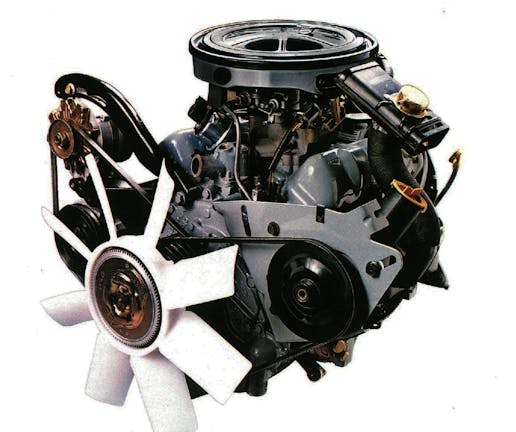
While Ford of Germany contributed greatly to the automotive landscape in Europe and the USA alike, Patrick Abbott reminds us that the Cologne V-6 wasn’t necessarily one of them. His example “regularly destroyed rocker arm assemblies and main bearings” while Richard Eaton was truly cursed with a lemon:
“I purchased a new, 1990 Ford Ranger with the 2.9-liter V6. Should have seen this coming when the transmission had to be replaced 4x for porous castings, and then both heads cracked under a recall. But then less than 50k miles after those heads they were again cracked sufficiently to turn the oil white in 1000 miles. Never again will I buy Fords.”
The Oldsmobile Diesel V-6
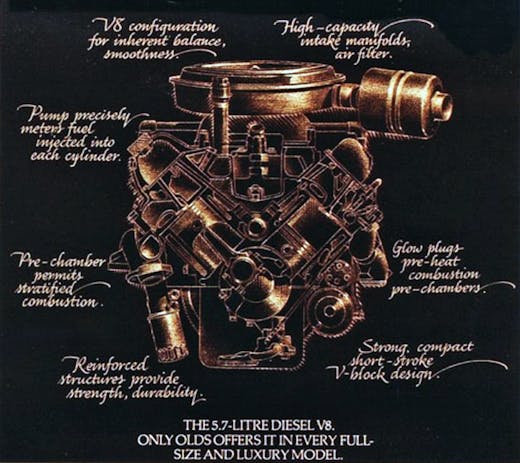
TerryTwoUtes picked up an example of an engine that history hasn’t looked too favorably upon: the Oldsmobile diesel.
“My parents had a ’78 Oldsmobile Delta 88 diesel, the dreaded 350 diesel engine derived from the gasser engine. After about 5–6 blown head gaskets and even one full short block replacement, it was finally traded off. Only good thing was GM trying to save face and all of those repairs were covered under extended warranty.”
Cadillac HT4100 V-8

Speaking of obvious punching bags, Hagerty Community member Coffeyclan reminds us all how low Cadillac went upon the introduction of this “High Technology” motor:
“The worst was Cadillac’s HT4100 engine. Acceleration was at a snail’s pace, the timing chain went bad twice, etc, etc, etc. I sold this car before the warranty ran out!”
Detroit Diesel “Fuel-Squeezer”
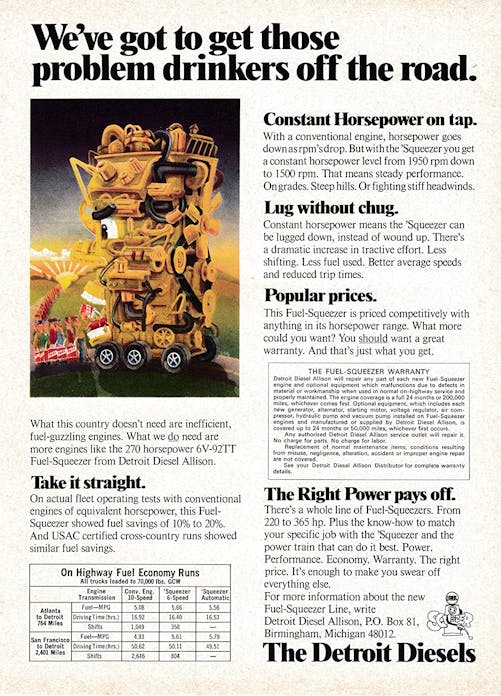
The one, the only, the legendary DUB6 threw us a curveball, thanks to his experience driving commercial trucks:
“In the mid-’70s, I drove longhaul truck for a fleet operator that leased their rigs. Most of the trucks had Cat engines and either 13 or 18 speed transmissions. As fuel prices rose during the embargo period, the leasing company offered up a Kenworth needle-nose with Detroit Diesel “Fuel-Squeezer” and 6 speed tranny to test out. Guess who was low enough on the pole to get picked to drive it for what was supposed to be 3 months?
That thing was so gutless – and the gear ratios so far apart – that even on the slightest grade, I was lucky to be able to manage 20 mph, loaded. Empty, it might get to 50 downhill, but then of course, there would be a corresponding upgrade. Fuel squeezing? Hardly. Most of the big Cats were averaging 4.5-5 mpg. This little longnose managed about 6.0 – mostly because the throttle had to be just about wide open all the time just to maintain forward momentum.
Maybe would have been fine for a flat-land operation, but in the mountainous WEST, it was pretty sad. My trips started taking up to twice as long as was projected, and several appointments would be missed every week. After about 8 weeks, the truck went back to Kenworth!”
Toyota 18R-C four-cylinder
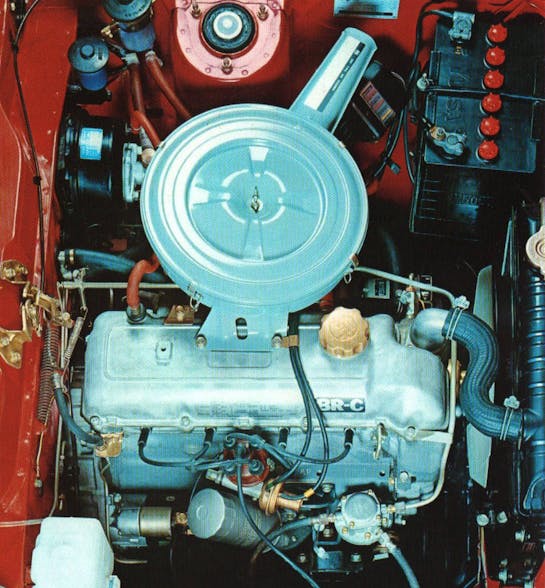
Let’s be clear on one thing: This isn’t a slam on all Toyota 18R engines, only the California-spec motor aimed at reducing emissions. Pete notes that the 18R-C was never designed for durability:
“I am a car guy and former auto mechanic. By far the worst designed and engineered engine was a Toyota 18R-C. I have had experience with more than one, and they all burned valves every 15,000 miles even after Toyota did a factory upgrade to “fix” the problem (which it did not). I drove the car for 75,000 miles and did 5 valve jobs before I woke up and sold it for $500, it did have a good clock though.”
Chevrolet 2300 four-cylinder

Of course the 2300 motor would make the list, as there were three negative comments to this effect. It didn’t help that the early Vegas weren’t the most reliable dance partner, and NCB chimed in with a personalized tale of ownership:
“I owned a 1973 Vega GT. Yes, I’m dating myself. First, and worst car I ever owned. Engine overheated due to poor cooling system design which led to scored cylinder walls in the aluminum block. It drank oil! Bad valve stem seals and “rusting away to nothing in 5 years” were icing on the cake. MotorTrend Car of The Year in 1971!”


You missed two significant ones, and both of them are sad, because when they did work they were spectacular, however when it went wrong….
BMWs pre-2014 N63 the ‘hot-vee’ this engine ate batteries. The list of problems was endless resulting a complete US buy back of the engine. If you want one, you can still find them on the road in canada.
The Ford 6.4L (international harvester) diesel. If you had one, you know. In the first 60,000miles it would spend 3 days a month in the ford service bay – yup, me and the diesel mechanic were became best friends.
Yep The Vega gets my vote. It was really a fun little car but…. Two short blocks in 40,000 miles because GM didn’t use liners in the cylinders. As I remember, if you lost coolant the block would warp itself away from the head and the temp gauge never moved. At only two years a big hole just appeared in the roof. No warning, the metal had quietly rusted away under the paint
Seems to me that GM has the most of the worst!!
That’s one of the many reasons why I don’t own any!
VAG – VW -AUDI 2.0 TURBO CCTA ENGINES ARE POS…
Many of the engines listed were victims of the external parts (carbs with pollution prevention mods, etc), but the Vega engine really did earn it’s bad reputation legitimately. I heard that they named the next 4-cylinder the “Iron Duke” just to let everyone know it was not that lousy aluminum engine.
Anyone remember the 262 cu. in. small block Chevy V8 in the 1975 and 1976 Monza? It was an alternative to the doomed 2300 aluminum I-4. It put out 110 horsepower and got 13 miles per gallon. But the real surprise came every 30,000 miles when the engine mounts were loosened and the engine was raised to replace the sparkplugs. It was replaced by the 305 in 1977.
I never loosened the engine mounts to replace the plugs on any of them. The 262 V8 was gutless though.
What? No mention of the Mazda RX8 rotary? Don’t get me wrong, I love my 2005 RX8. The engine is smooth and an engineering marvel. But it only lasts around 60,000 miles before it needs a rebuild ($10,000). And, if the coils and special park plugs aren’t replaced religiously every 20,000-30,000 miles (the engine does not tolerate weak spark) or if the battery weakens (the starter has to spin the motor at high speed to start), the engine may flood requiring an expensive and complex de-flooding procedure done best by a dealer. But, having said all that, the car is spectacular to drive. I still have mine with 100,000 miles – it needs a new clutch and an engine rebuild and I’m seriously contemplating doing it. I guess that is true love, or starry-eyed foolishness. And isn’t that what love is all about?
the Renesis was not Mazda’s best rotary design — they suffer from front rotor oil starvation — I was a Mazda Sales Manager in Puerto Rico – home of the fastest , most powerful Rotary cars in the world … if you pre mix a Rotary should last for a long time – but if you treat it like a Civic it will lock within 50k
Some of these listed seemed to be bad repairs. Others are yep, that engine sucked.
I had an ‘89 Plymouth Acclaim with the 2.5L NA (stroked 2.2L) for a few years in high school and college. My sister had it before me for 4-5 years (in college and after). In the almost 10 years we had that car (which was used when my parents got it), it went through no less than 4 head gaskets. Didn’t matter how you drove it. Easy like an old lady getting groceries, or like a teenage high school boy, it was going to eat a head gasket every few years. The last time it did, it even cracked the aluminum head. I was tired of dumping thousands of dollars to fix everything on it, so I parked in on the garage, gave the keys back to my dad, and went and bought an ‘03 Ranger Edge with the 3.0L V6.
It ended up getting sold to Pick-A-Part in Houston.
Author is a rank armature at this. Don’t ask the general populous… don’t ask an automotive journalist. Ask a used car dealer. Here’s my list in no particular order (30 years in the car business).
Chevy 2300 Aluminum L4 (early Vega’s… you guys need to know the Iron Duke landblasted in this article replaced these engines later in the model run.)
GM 3.6 V6 and 2.4 Ecotech L4 ( Mainly in Chevy Equinox, Traverse, and Camaro / GMC Terrain, and Acadia up to 2012… later ones better. very expensive and common timing chain issues)
Cadillac 4.6 Northstar V8 (maybe the absolute worst engine ever. constant head gasket issues. This one abomination destroyed Cadillac reputation more than any one thing.)
Ford 3.7 V6 (found in striped down F-150’s… mostly work trucks. They may last about 20k miles. Pure junk.
Ford 5.4 V8 (Timing chain issues, spark plug issues… junk)
Ford 3.8 V6 (60,000 mile lifespan. head gasket issues. enough said)
Hyundai Kia GD-i L4 and V6 engines (Hight theft vehicles too… hmmm…. owners may or may not be purposely leaving the keys in the ignition of these. Truth be known failures probably mostly from abuse and neglect.)
VW Audi Porsche. Any engine they have ever built. (yes I said it. They suck. The only reason folks like the air cooled ones is you can change one out quicker than you can rotate the tires. I’m sorry, but that doesn’t make the engine good.)
Chrysler 2.7 V6 (notorious engine for oil starvation and or sludge. Truth be known probably mostly from abuse and neglect.)
BWM L4 (if you are looking at a Bimmer and it has 4 hampsters instead of 6, run away. fast.)
Mazda Rotary (this engine should have never ever ever been put into a production automobile. gas thirsty… oil thirsty… if it stops smoking you are out of oil… steer clear)
Anything made in the UK, France, or Italy before the year 2000 or thereabouts.
Anything made in China or Korea before the year 2000 or thereabouts.
Hybrids by anyone other than Toyota (almost no improvement in gas mileage and a bunch of problems. run away).
Electric Vehicles (DO NOT BUY ONE YET. The technology is getting better, but if you buy one now… especially on the used market with no warranty, you are screwed. Don’t be a Guinea pig for these big corporations. Give them a few more years to get it right.)
Matt Hagen’s list is generally better than the article’s list. I was specifically going to mention that one thing Chrysler almost never deserves is a “bad engine” on a list, but the 2.7 V6 (a product of the Daimler years) does deserve it, and CERTAINLY more than the rugged little 2.2/2.5… which might be considered problematic by 50s-70S Chrysler standards, but not at all compared to other 80s products. The 2.7, though, would be a lemon in any era.
Oh no! A “rank armature”? Is that something inside a generator that literally stinks? 🙃
Good catch DUB6!
Anything German quite Frankly!
Another vote for the Olds Diesel. I had one of those POS in college in the early 80’s. I live in the south and went through a pair of batteries each year. Couldn’t afford to get rid of the damn thing. It is that car the makes me shutter every time I hear a diesel auto start. That car took at least 10 years off my life. Every time I took it into the dealership and complained they looked at me like I had two heads. Acting like they were surprised. A very sad time for GM to not take responsibility for it.
LOL…….sadly, I have owned several of these motors….including a new 1973 Vega GT 2300. But the engine that frightened me the most, was the BMW N20………kept waiting for the timing chain guides to fail running 70 MPH….Luckily I kept rolling the dice and was able to trade it before replacing and/or disintegration!
I can top almost all of these – BMW V8’s from 2002 – 2009. German engineering hung the alternator bracket on a hole in the engine thus requiring a gasket that leaked. $5 part – 12 hours of labor to replace. And then there were the valve seals, and the coolant pipe leaks. Yikes!
My parents had the Honda CVCC before I was born. My Dad as a new father felt he had to be responsible, so he traded in his 427 Galaxy for the CVCC. They said everytime they went through a puddle the engine would die.
Later they had a 1983 Caprice Classic Station wagon with the 350 diesel. That was the card I learned to drive in. Talk about a gutless wonder, but they loved it. Got 30 MPG and was fairly reliable until I did a Left turn in front of a F350 and turned it bannana shaped (We still drove it for a few weeks)
Motor in my ’72 Audi 100 LS, remarkable Audi survived after that dud.